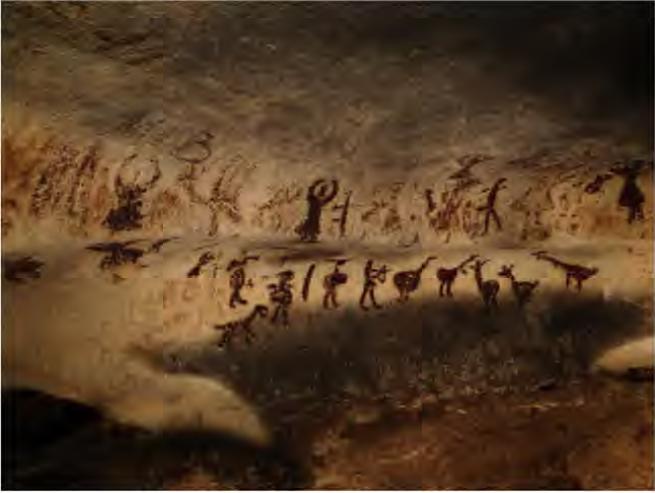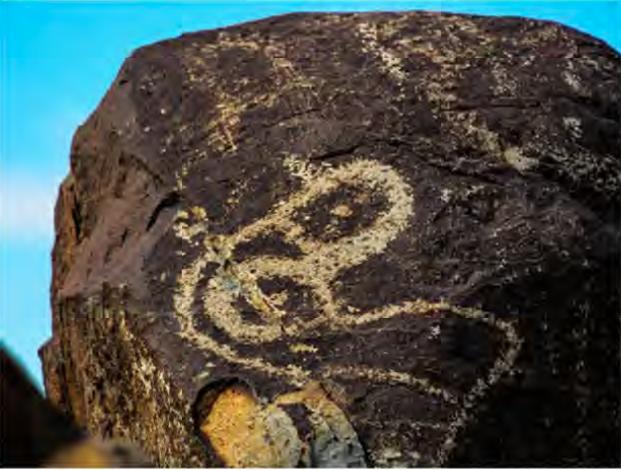This module is designed to help you explore the wonders of archaeology.
Uncovering the Past
Requirements last updated January 2022. There are broken links and outdated information in places and formatting may not match between two Nova awards because the requirements are preserved to match the original state from Scouting America. Where available, the related counselor notes have been included along with the requirements.
1.
Choose either A, B, or C and complete all requirements.
A.
Watch an episode or episodes (about one hour total) of a show about
anything related to archaeology. Then do the following:
1.
Make a list of at least two questions or ideas from what you
watched.
2.
Discuss two of the questions or ideas with your counselor.
Some examples include - but are not limited to - shows found on PBS
(such as NOVA), Discovery Channel, Science Channel, National
Geographic Channel, TED Talks (online videos), and the History
Channel. You may choose to watch a live performance or movie at a
planetarium or science museum instead of watching a media
production. You may watch online productions with your counselor's
approval and under your parent's or guardian's supervision.
B.
Read (about one hour total) about anything related to archaeology. Then
do the following:
1.
Make a list of at least two questions or ideas from what you read.
2.
Discuss two of the questions or ideas with your counselor.
Books on many topics may be found at your local library. Examples of magazines include but are not limited to Odyssey, Kids Discover, National Geographic Kids, Highlights, and OWL or owlkids.com.


C.
Do a combination of reading and watching (about one hour total) about
anything related to archaeology. Then do the following:
1.
Make a list of at least two questions or ideas from what you have
read and watched.
2.
Discuss two of the questions or ideas with your counselor.
2.
Complete ONE adventure from the following list for your current rank
(Webelos or AOL) or complete option A or option B. (If you choose an
adventure, choose one you have not already earned.) Discuss with your
counselor what kind of science, technology, engineering, and math was used
in the adventure or option.
- Webelos Scouts: Project Family

Option A: Some of the objects archaeologists find have been
preserved in various ways. Experiment with preserving a hot dog with
baking soda. Measure each dimension, then completely surround and cover
the hot dog in baking soda. Let sit in a safe place for seven days, and
measure again. Then cover the hot dog again, let it sit another seven
days, and measure it a third time. Make note of any changes in size,
shape, color, and other properties. Compare it to a hot dog that has
not been preserved. Discuss your experiment with your counselor.
Note: Do not eat the hot dog, and make sure to store your
experiment in a safe place and dispose of it properly when you are
done.
Useful Links:
Option B: Use plaster of paris to create a "rock" mold at least
half an inch thick. Once it is set, create a dark surface like a patina
on the rock, possibly by using tempera paint. Use a carving tool, such
as a screw or push pin, to create one or more petroglyphs on your rock.
Search online for "plaster of paris petroglyphs" for instructions.
3.
Explore. Do each of the following:
A.
Look up the definition of the word archaeology and discover what an
archaeologist does on a dig site, and what other activities are
involved in their work. Discuss it with your counselor.
Archaeology is the study of the human past by recovering and
analyzing materials that people left behind.
B.
Discover the differences between physical remains, artifacts, and
ecofacts. Discuss with your counselor examples of each that
archaeologists can find for a prehistoric people group.
An artifact is any object made by a human being. Usually, it
refers to an object that has cultural or historical interest.
An ecofact, or biofact, is any organic material that has been
recovered and has cultural or historical significance. This might
be bones, animal horns, plants, and so on. If the item has been
manipulated or modified by humans, it becomes an artifact.
Physical remains are things left behind that were part of an
animal - for example, body parts or fossils of body parts.
C.
Look around your home. Make a list of 10 artifacts from your home that
serve as clues to the way you live. Discuss what you discovered with
your counselor.
Artifacts could include anything found lying around the Scout's
home. A dog crate could indicate the family has kept domesticated
animals. A hammer could indicate they know how to use tools. Ask
the Scouts to pretend they have never seen a particular item
before, and what might they think it is.
4.
Be an archaeologist! Choose A or B:
A.
Much can be discovered about a group of people based on the items they
throw away. With a parent or guardian's permission and guidance, look
through the items in a medium-sized trash can that contains at least a
few days' worth of trash. Draw conclusions about the people in that
location and how they might live, based on what they throw away.
Determine which items are artifacts and which are ecofacts. Discuss
with your counselor how the relative age of the artifacts be estimated
based on their location in the trash can.
You may want to have the Scout wear disposable gloves, especially
if the trash can contains food remains. The Scout could lay out a
plastic tarp or sheet on the floor, then spread the trash out in
order from what was at the top of the can to what was at the
bottom. Can the Scout tell when one day ended and the next began?
Is it possible to estimate how many days' worth of trash there is?
You could ask the Scout to take pictures and bring them to discuss
with you.
B.
Create your own layers of artifacts and ecofacts. Gather some small
items that would show future archaeologists how you and your family
lived. Use a plastic bottle or glass jar as the vessel and Play-Doh
sand, dirt, etc., to form layers. Place the gathered items in different
layers. Think about which layers would hold the older items compared to
newer ones. Show it to your counselor, and discuss with your counselor
why you chose these items and what they would show archaeologists about
how you lived. Excavate your items when you're done.
The lower the level, the older the item would be.
5.
Visit a place that has items that have been excavated, such as a museum,
dig site, historical society, etc. Talk to someone who works there about
the displays. If you can't visit in person, use resources in your school or
local library or on the internet (with your parent's or guardian's
permission and guidance) to take a virtual visit. Discuss with your
counselor what you saw, how the archaeologists helped uncover those items,
and what questions you had.
6.
Discuss with your counselor what you have learned about archaeology while
working on this award.

